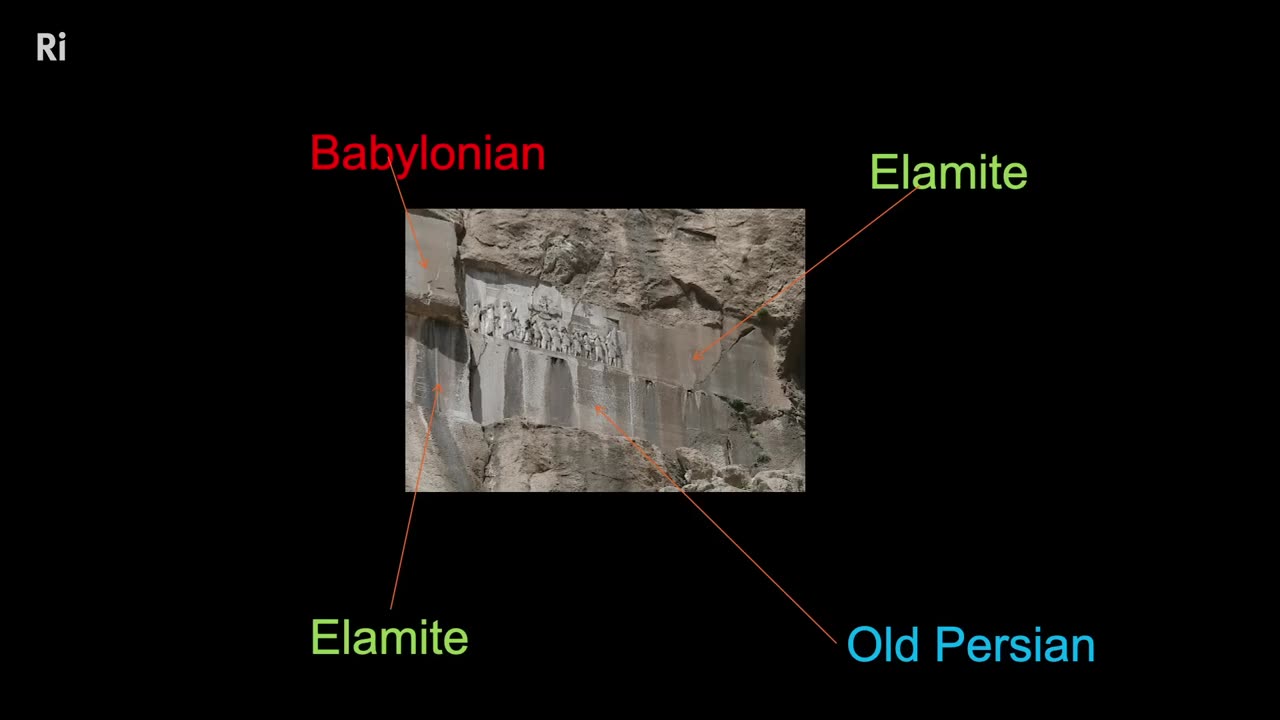Premium Only Content

How Writing Developed - Cuniform and more with Irving Finkel
Have you ever wondered how writing developed?
Irving Finkel, an excellent lecturer who often uses
humour to drive home a point. Includes reference to
the trilingual inscription of Darius the Persian at Behiston.
The Behiston monument also figures prominently in the Lost
Tribes narrative and the hidden true history of the White Christian
peoples. Connecting Dots! 😊✨
#PeaceAndRespect
#GodBless
#BiblicalEarth
#FindTheCreator
+++++++
Source:
2,521,375 views Jul 24, 2019 THE ROYAL INSTITUTION
Writing is generally agreed to be among the greatest inventions in human history, perhaps the greatest invention, since it made history possible.
Subscribe for regular science videos: http://bit.ly/RiSubscRibe
You can read more about Irving's quest to explore the Noah's Ark myth in "The Ark Before Noah: Decoding the Story of the Flood": https://geni.us/zU95bVO
or learn more about cuneiform writing in "Cuneiform": https://geni.us/eMPb
Writing seems to have been invented in the late fourth millennium BC in Mesopotamia in the form of wedge-shaped marks pressed into soft clay with a reed stylus: the script known as cuneiform. Through his work on this ancient language, Irving Finkel, has uncovered amazing secrets from over five thousand years ago, including the story behind Noah’s ark.
Irving Finkel is the curator in charge of cuneiform inscriptions on tablets of clay from ancient Mesopotamia at the British Museum, of which the Middle East Department has the largest collection of any modern museum. This work involves reading and translating all sorts of inscriptions, sometimes working on ancient archives to identify manuscripts that belong together, or even join to one another. He is the author of The Ark Before Noah: Decoding the Story of the Flood.
This talk was filmed in the Ri on 18 January 2019.
-
 LIVE
LIVE
Vigilant News Network
7 hours agoUK Government BUSTED in Secret Plot to Extract Your Data | Media Blackout
1,377 watching -
 1:03:32
1:03:32
Winston Marshall
3 days ago"War On Children!" The DEMISE Of The West Starts With Schools - Katharine Birbalsingh
83.4K62 -
 48:02
48:02
Survive History
10 hours ago $2.28 earnedCould You Survive as a Sharpshooter in the Napoleonic Wars?
29.2K2 -
 12:03
12:03
Space Ice
11 hours agoSteven Seagal's China Salesman - Mike Tyson Knocks Him Out - Worst Movie Ever
20.3K14 -
 11:37
11:37
Degenerate Jay
10 hours ago $2.39 earnedJames Bond Needs Quality Over Quantity From Amazon
20.7K2 -
 15:23
15:23
Misha Petrov
10 hours agoTrad Wives & Girl Bosses Go to WAR!
27.6K34 -
 2:03:11
2:03:11
TheDozenPodcast
9 hours agoFootball villain fighting the state: Joey Barton
26.2K1 -
 LIVE
LIVE
Scottish Viking Gaming
12 hours ago💚Rumble :|: Sunday Funday :|: Smash the Blerps and Vape the Terpes
517 watching -
 1:45:00
1:45:00
RG_GerkClan
13 hours ago🔴LIVE Sunday Special - It's Time for World Domination - Civilization VII - Gerk Clan
71.9K27 -
 LIVE
LIVE
Major League Fishing
4 days agoLIVE Tackle Warehouse Invitationals, Stop 1, Day 3
160 watching